Common problems with tiles
 Audio for slide 1 (mp3 |6|KB)
Audio for slide 1 (mp3 |6|KB)
They're described in two main categories - adhesive problems and tiles running out of bond.
The first category applies generally to all resilient floor coverings that are stuck down with adhesives.
The second category is specific to tiles, because it relates to the way rows of tiles line up over the whole area.

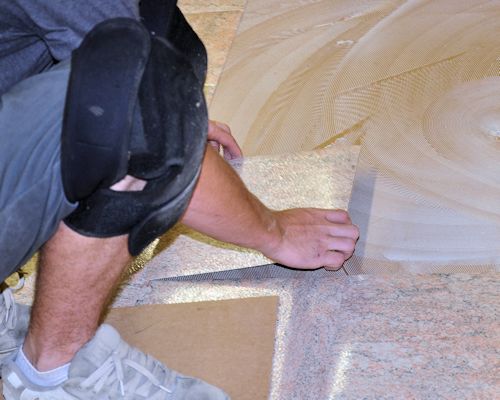 Audio for slide 2 (mp3 |6|KB)
Audio for slide 2 (mp3 |6|KB)
Adhesive problems
Tiles need to be laid into the adhesive at the correct time.
If they're laid too late, they won't bond properly to the subfloor because the adhesive will have already skinned over.
This is called 'late placement'.
The best way to avoid it is to only spread as much adhesive as you can comfortably lay tiles on within the allowed 'working time'.

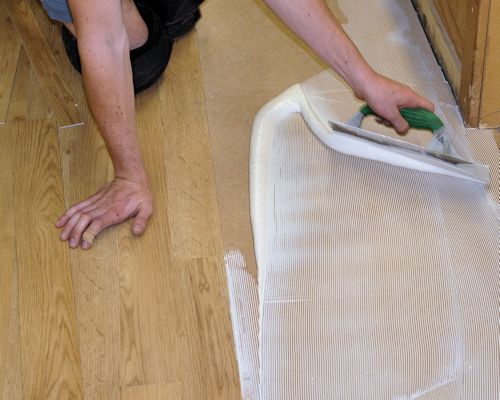 Audio for slide 3 (mp3 |6|KB)
Audio for slide 3 (mp3 |6|KB)
This particularly applies to areas alongside tiles that have been laid some time earlier.
Make sure you remove any old adhesive that's already set, and that fresh adhesive is spread to the edge you're working to.

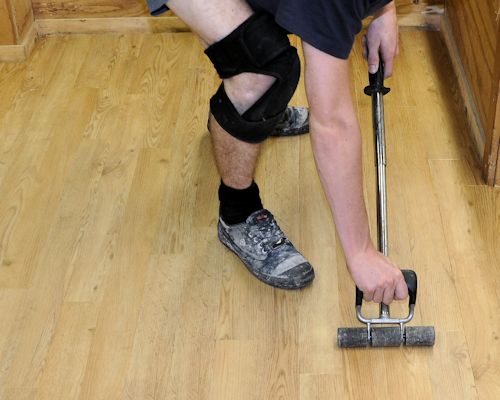 Audio for slide 4 (mp3 |6|KB)
Audio for slide 4 (mp3 |6|KB)
Be extra careful at corners and with small pieces of tile - use a hand roller or rubber hammer if the large roller won't reach.
If you don't roll the tiles properly, the adhesive may not transfer to the underside of the tiles, which could result in them bubbling or lifting at the edges.
You'll recall that we discussed these issues in the lesson 'Applying an adhesive' in Section 1.
The video clip in the learning activity below will help to reinforce these points.

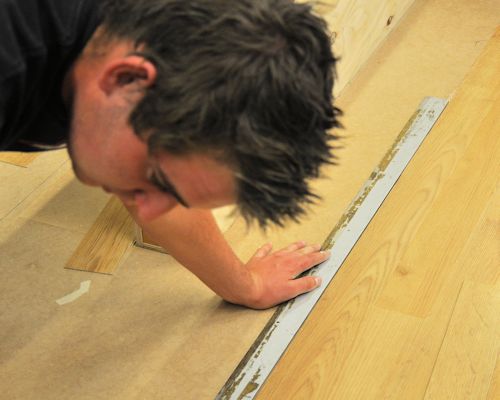 Audio for slide 5 (mp3 |6|KB)
Audio for slide 5 (mp3 |6|KB)
Tiles running out of bond
Tiles can creep out of bond for various reasons, especially in a large floor area.
One possible cause is surface undulations, or rises and falls in a wave-like pattern.
This can sometimes make particular rows of tiles 'gain' on other rows where the floor is perfectly flat.
If this happens, you will need to strike a chalk line along the edge where the bond is starting to creep out and trim the tiles back to the new line with a straight edge.
Another possible cause is a slight variation in tile size.
Tiles in different batch lots or different colours may have fractionally different sizes even though they are still within the tolerances allowed.

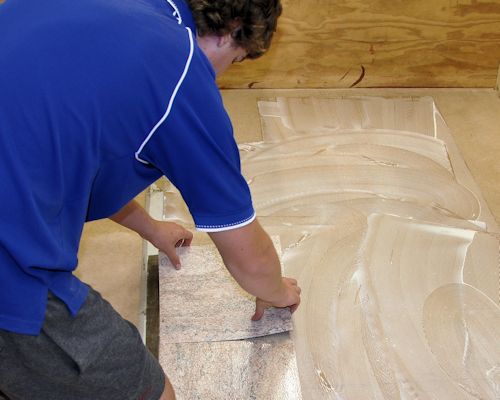 Audio for slide 6 (mp3 |6|KB)
Audio for slide 6 (mp3 |6|KB)
That is, when you butt them against the next tile, use either a tiny amount more or less pressure just on those tiles.

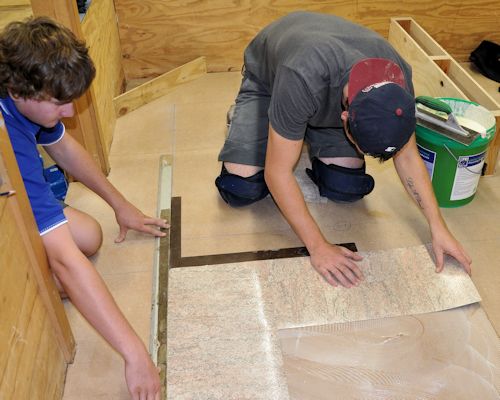 Audio for slide 7 (mp3 |6|KB)
Audio for slide 7 (mp3 |6|KB)
One way of reducing the problem is for you to both start from the same point and work away from each other in different directions.
Another way is for your offsider to lay a second row of tiles behind your first row, making sure that they stay in bond with yours.


Learning activity
Audio 8 (mp3 |6|KB)The link below will take you to a Forbo video on the correct use of adhesives and how to avoid common problems.
The video is designed to provide specific advice on the installation of Marmoleum, the brand name of Forbo's linoleum products. However, it also covers more general topics, including the difference between 'open time' and 'working time', and the variations in technique that apply to sticking down linoleum and vinyl products.
Watch the clip and then answer the following questions:
- What conditions will affect the 'open time' and 'working time' of an adhesive?
- What does 'fully wet' mean?
- What does 'semi-wet' mean?
- What does 'flashed off' mean?
- At what stage of the drying process should you lay the product into the adhesive?
- What is one of the most common causes of installation failure in Marmoleum?





